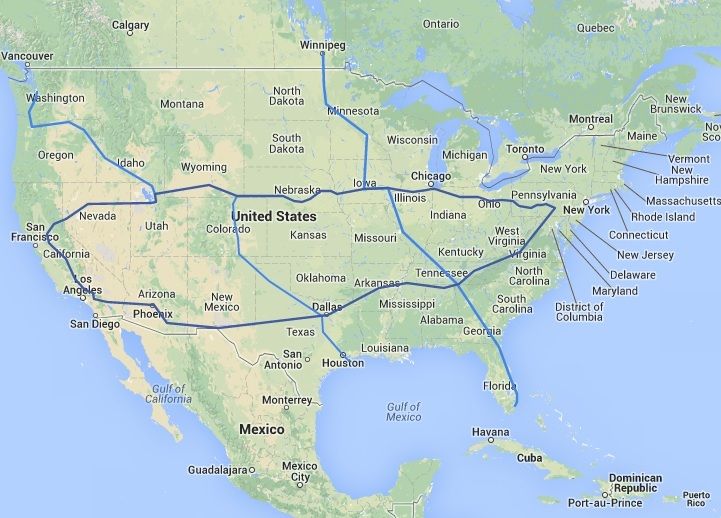 The Steel Interstate is a proposal to pursue dramatic gains in the energy efficiency of long haul freight transport in the United States, resulting in:
The Steel Interstate is a proposal to pursue dramatic gains in the energy efficiency of long haul freight transport in the United States, resulting in:
- Substantial reductions in Petroleum Imports;
- Substantial reductions in Greenhouse Gas emissions;
- Substantially improved protection from Petroleum Supply interruptions;
- Improved productivity for North American manufacturing; and
- Substantial reductions in damage to the existing Asphalt Interstate System
How can it promise all of this? By mining gross inefficiency. The United States has one of the most energy inefficient systems of moving freight long distances available under current technology, and we combine that with an economy that relies heavily on moving freight long distances.
Some of the specific sources of energy efficiency are:
- Moving cargoes in linked electric freight trains offers less air resistance than moving cargoes in individual trucks, because the freight car ahead provides a slipstream for the freight car immediately behind;
- Steel wheel on steel rail has less rolling resistance than rubber tire on asphalt road;
- Electric motors are more efficient than diesel or gasoline internal combustion engines; and
- When braking, electric trains can put a load on their electric motors and generate power, feeding it back onto the line
Overall, long haul electric freight is around 15 times more energy efficient than long haul diesel semi freight. I tend to express this as over ten times the energy efficiency, to allow leeway for possibly longer routings when taking advantage of the Steel Interstate.
Long haul electric freight trains are also more space efficient than long haul truck transport. Freight demands that would require multiple lanes each way just for truck traffic can be readily accommodated on a two track mainline route. This can be done while accommodating a mix of 60mph heavy freight and 100mph fast container freight by including regular extended sections of passing track: the difference between passing track and sidings is that on-schedule faster and slower trains using the passing track remain in motion, rather than one sitting still in a siding waiting for the other to pass.
Finally, the operating cost per ton-mile for electric freight for both 60mph heavy freight and 90mph fast freight is enough lower than the operating cost of long haul trucking that the government can fund a National Steel Interstate with interest subsidies alone, with Access Fees and User Fees refunding the original capital cost of the system ~ initially, funding expansion of the system, and finally funding retiring the bonds.

Recent Comments